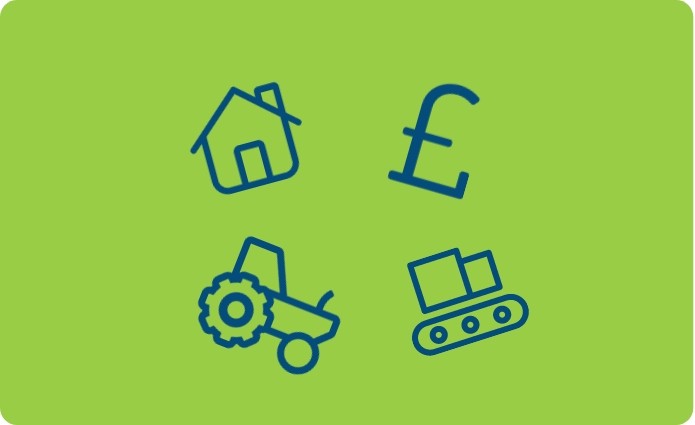
Capital Allowances: A Comprehensive Guide for Small Business Owners
Capital Allowances: A Comprehensive Guide for Small Business Owners
When you invest in assets like machinery, vehicles, or office equipment for your business, you can’t deduct the full cost from your profits in the year of purchase. Instead, HMRC allows you to claim Capital Allowances—a method of spreading the cost of these assets over several years. This blog will guide you through the essential dos and don’ts of claiming capital allowances, the risks involved, and the potential implications with HMRC.
What Are Capital Allowances?
Capital allowances are a way of accounting for the cost of purchasing or investing in business assets over time. Instead of deducting the cost all at once, you claim a portion of it each year, reducing your taxable profit and, consequently, your tax liability. This is particularly beneficial for businesses that invest in significant assets, such as a construction company buying heavy machinery or an IT consultancy investing in computer equipment.
Examples of Qualifying Assets:
- Machinery and Plant: Lathes, conveyors, computers, and office furniture.
- Vehicles: Vans, trucks, and company cars.
- Fixtures: Heating systems, air conditioning, and lighting.
- Buildings: Certain integral features like electrical systems or thermal insulation (specific capital allowances apply).
The Dos and Don’ts of Claiming Capital Allowances
Do: Keep Detailed Records
Accurate records are crucial when claiming capital allowances. Keep receipts, invoices, and documentation related to the purchase and use of the asset. This ensures correct calculations and protects you during an HMRC audit.
Don’t: Claim on Non-Qualifying Expenditure
Not all expenditures qualify for capital allowances. For example, the cost of acquiring land, buildings (except for specific qualifying fixtures), or stock cannot be claimed. Ensure you’re only claiming on valid assets.
Do: Consider the Annual Investment Allowance (AIA)
The AIA allows you to deduct the full cost of qualifying items up to a certain limit, currently £1 million per year. This is especially beneficial for small businesses making significant capital investments. However, remember that AIA doesn’t apply to cars.
Don’t: Forget to Adjust for Personal Use
If an asset is used for both business and personal purposes, only the business portion of the cost can be claimed. Failing to adjust for personal use can lead to problems with HMRC.
Do: Use the Right Type of Allowance
Different types of capital allowances are available, such as:
- First-Year Allowance (FYA): Enhanced deductions for specific assets.
- Writing Down Allowance (WDA): Applies to assets that don’t qualify for AIA or FYA.
Ensure you’re using the correct type to maximise tax efficiency.
Don’t: Delay Claiming
Capital allowances must be claimed in the correct accounting period. Delaying your claim could result in missed tax relief opportunities.
Risks of Claiming Capital Allowances
1. Misclassification of Assets
A common risk is misclassifying an asset as qualifying when it doesn’t. For instance, claiming AIA on a non-qualifying building improvement could result in HMRC disallowing the deduction, leading to unexpected tax bills and possible penalties.
2. Incorrect Calculation
Miscalculating capital allowances, particularly for assets used for both business and personal purposes, can lead to issues. Overstating claims could trigger an HMRC inquiry, which may result in penalties and interest on unpaid tax.
3. Overlooking Small Assets
It’s easy to miss out on claiming smaller assets or those purchased late in the financial year. However, these can add up over time, so it’s essential to account for all qualifying assets, no matter how minor they seem.
Potential Implications with HMRC
HMRC Inquiries and Investigations
If HMRC suspects your capital allowance claim is incorrect, they may open an inquiry into your tax return. This process can be stressful and time-consuming. If significant errors are found, HMRC could impose penalties in addition to reclaiming the tax owed.
Penalties for Incorrect Claims
Penalties for incorrect claims range from 0% to 100% of the tax understated, depending on whether the error was an innocent mistake or a deliberate understatement. Carelessness could lead to penalties of up to 30% of the tax owed.
Impact on Future Claims
Errors in your capital allowance claims may cause HMRC to scrutinise future claims more closely, leading to further investigations and impacting your cash flow or business investments.
Practical Example: Capital Allowances for a Construction Business
Let’s consider a construction business that purchases a new excavator for £50,000. Here’s how the business could use capital allowances to reduce its tax bill:
- Annual Investment Allowance (AIA): The business could claim the full £50,000 against its taxable profit in the year of purchase, reducing its tax liability significantly.
- Writing Down Allowance (WDA): If the business doesn’t claim AIA (perhaps because it has already used its limit), it could claim 18% (or 6% for special rate assets) of the cost annually through WDA, spreading the deduction over several years.
- Personal Use Adjustment: If the excavator is used for personal projects, the company would need to adjust the claim to reflect only the business-related portion of the use.
Capital allowances can be a powerful tool for managing your business’s tax liabilities, but they need to be handled with care. By following the dos and don’ts outlined in this guide, understanding the risks, and being aware of the potential implications with HMRC, you can maximise your tax relief while remaining compliant with tax regulations.
For expert advice on capital allowances and how they apply to your specific business, Helpbox is here to assist. Contact us today to ensure you’re making the most of your business investments while staying compliant with HMRC requirements.